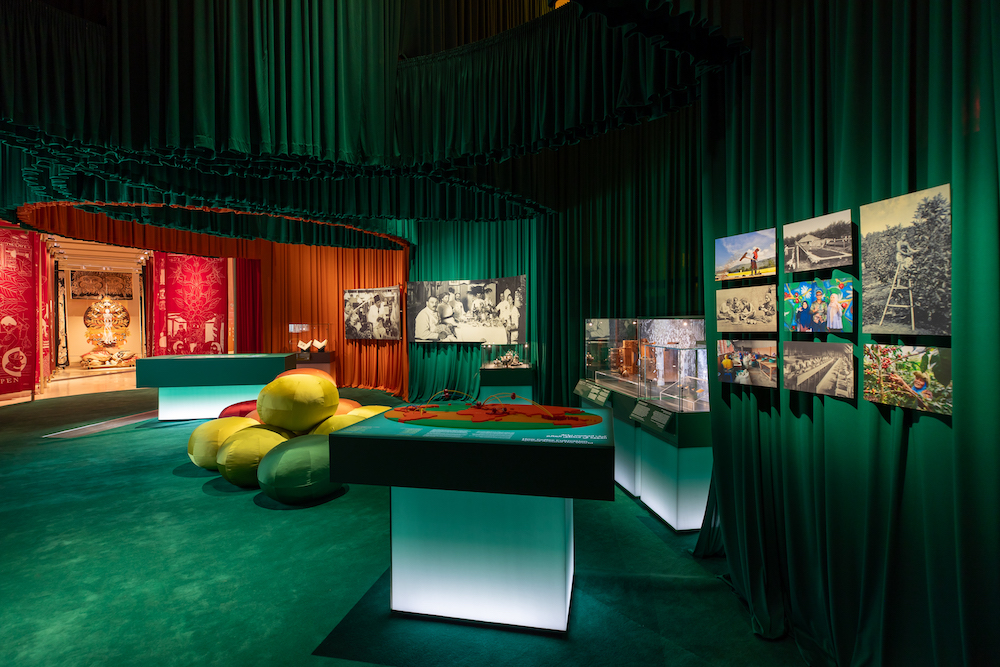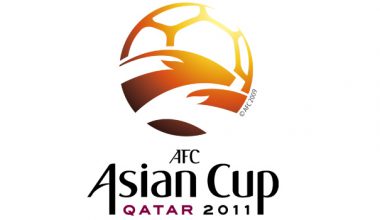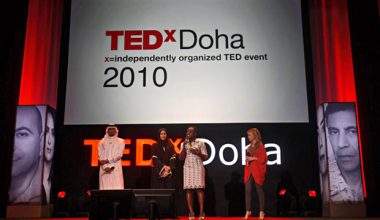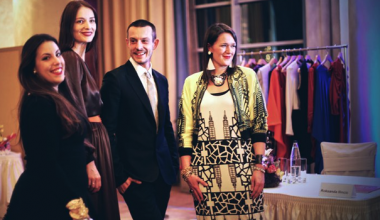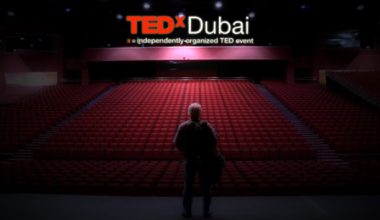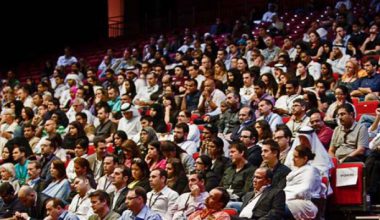Presented as part of the Qatar-Indonesia 2023 Year of Culture and organized in collaboration with the National Museum of Indonesia, Growing Kopi, Drinking Qahwa: Stories of Coffee in Qatar and Indonesia is an exhibition highlighting traditional and contemporary coffee cultures in Qatar and Indonesia.
The exhibition brings to life the history of coffee growing, trading, and drinking around the world, with a particular focus on the traditional and contemporary coffee cultures of Qatar and Indonesia, using interactive displays, immersive projections, sights, smells, soundscapes, specially commissioned contemporary artwork, and more.
A series of public programs engaging local coffee shops, artists and baristas from Indonesia, as well as activities including barista experiences and competitions, special tours and partnerships with local shops have also been organized.
We spoke to Dr Marie-Pierre Lissoir, project manager and curator of NMoQ for the coffee exhibition about the historical perspective, conceptulization, and key elements of this fascinating collaboration that offers an incredible cultural experience.
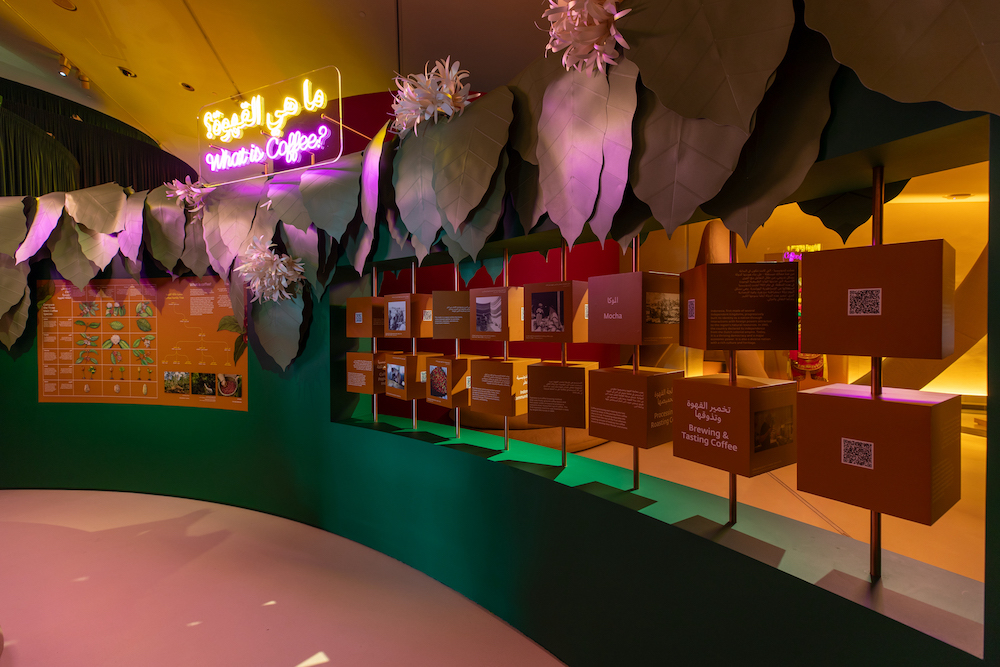
Saira Malik (S.M.): Can you tell us about the conceptualization of the Growing Coffee, Drinking Qahwa exhibition and the journey behind it?
(M.P.L.): This exhibition was created for Year of Culture Qatar-Indonesia 2023, a yearly program creating exchanges between different cultures and traditions. The exhibition Growing Kopi, Drinking Qahwa; Stories of Coffee in Qatar and Indonesia is one of the many events and activities organized for Years of Culture 2023. For this exhibition, the National Museum of Qatar (NMoQ) collaborated with National Museum of Indonesia (NMI) to create a unique exhibition celebrating coffee cultures of both countries.
The exhibition was created with curators based in Qatar (Dr Marie-Pierre Lissoir, Tania Abdulmonem H. I. Al Majid, Najma Ahmed) and Indonesia (Daroe Handojo, Nusi Lisabilla Estudiantin, Handoko Hendroyono). When working on the topic, we rapidly realized that approaching coffee history and traditions of the Gulf and Indonesia, was actually exploring the world’s history of coffee. It was to break the Arab monopoly on coffee that European powers decided to start growing coffee in their colonies. The Dutch were one of the first to succeed, with their plantations settled in Indonesia, particularly on Java Island. Ever heard about “a cup of Java” to speak about coffee? Well, it is coming from there!
(S.M.): What was the curation process for the display and the program that has been designed around it?
(M.P.L.): With this global approach, the curators and myself decided to develop the topic from the plant to the cup, by dividing the exhibition in five parts:
1- What is Coffee: looking at the biology of the plant.
2- Growing and Trading: exploring the history of coffee growing and trading in the Arab World and Indonesia.
3- Roasting and Brewing: where visitors can smell the aromas of different coffee roasts and spices used in Qatari and Indonesian coffee.
4- Drinking and Serving: exploring the thriving coffee shops of Jakarta (Indonesia’s capital) and the subtlety of Qatari etiquette in coffee serving and drinking.
As an ethnomusicologist, it was important for me to also approach both Qatari and Indonesian cultures, beyond coffee. This is what we do in the last part of the exhibition, exploring how coffee fuels creativity:
5- Coffee and Creativity: celebrating Indonesian and Qatari arts and crafts related to coffee.
The Indonesian objects displayed in the exhibition are coming from the National Museum of Indonesia (NMI), but also from smaller institutions such as the Batik Museum and Multatuli Museum, as well as private collectors. The objects were selected with curators of NMI. Most are common objects, historical or contemporary, related to coffee. The interest of these objects is not so much their aesthetic (although some are particularly remarkable, such as coffee sets entirely made of silver), but what they represent. Thus, the objects from NMI embody the bitter-sweet history of coffee in Indonesia, and show to the visitors the power imbalance inherent to the colonial system in place in Indonesia for centuries. While some exhibitions are objects oriented, the objects displayed here tell a story, a story of suffering but also resilience.
The exhibition also displays objects from NMoQ such as dozens of dallah’s from all over the Gulf embodying the variety of qahwa making techniques and recipes.

(S.M.): What were the priorities when designing the user experience of this exhibition?
(M.P.L.): Exhibitions are quite complex to create. They require years of research, but their content needs to be carefully condensed in order not to overwhelm visitors. We used different media through the exhibition to catch visitors’ attention and keep their interest. Thus, while short texts are used to accompany objects, the exhibition also features a video game where visitors can learn how to grow coffee, filmed interviews, animated stories, graphisms, and pictures. Different senses are stimulated with the addition of the smell stations (with coffee roasts and spices), and soundscapes. Finally, two unique audio-visual experiences were created for the exhibition. One 360° degree screen immerges the visitors in a day at “Filosofi Kopi”, a coffee shop of Jakarta that deeply influenced contemporary specialty coffee scene in Indonesia, while the etiquette of qahwa serving is featured in a short-film created with local teenagers and played by Qatari actors.
(S.M.): What are some key elements from this highly engaging experience that combines visuals, scents, and audio, alongside specially crafted contemporary artworks? And how important is it to create novel experiences for audiences in these times?
(M.P.L.): The contemporary art piece displayed in the exhibition is called “Bloom in Agony”. It is a very big piece made of 12 batik flags (which motifs are made with dye resisting technique), a painted gate and a central wayang used in the traditional shadow puppetry of Indonesia. It was created by a collective of Indonesian artists called Gegerboyo. The piece illustrates the resilience of Indonesian people and how they could bloom in the agony of colonial heritage, by developing coffee growing and drinking,
The piece is very powerful in terms of visual and meaning. It closes the “Growing and Trading” section, after visitors could learn about the colonial past of Indonesian and the unfairness of the system. Displaying a contemporary art piece here is a way to give back the narrative to Indonesian and contemporary artists. The section about coffee history in Indonesia is illustrated by ancient objects from the NMI, but is concluded by this contemporary interpretation of coffee past and present history in Indonesia. With this piece, young Indonesian artists claim back the narrative about their history. Highlighting different voices and perspectives (from researchers, museum experts, artists, from Indonesia and other parts of the world). To tell the exhibition’s story is a very important step in decolonizing museums.
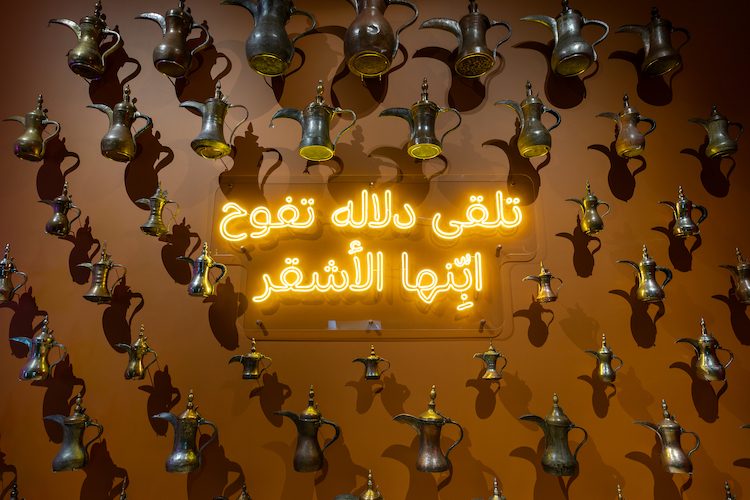
(S.M.): The program is engaging baristas and creatives. How significant was this element to the exhibition and what does it contribute to it?
(M.P.L.): The programming is always complementary to the exhibition itself. Traditionally, exhibitions are built around objects. This is something we already tried to deconstruct here by also focusing on the actors of coffee (plantation workers, local artists, barista). However, the best way to bring an exhibition to life is through the programming, by inviting Indonesian and Qatari actors such as entrepreneurs, coffee experts or artists. For example, visitors were able to meet and discuss with Yori Noor Aini Atmadi Hartati, the batik artists whose work merging traditional motifs and modern coffee patterns is displayed in the last section of the exhibition. They were invited to discuss with her the meaning of her work, and try out the complex batik technique, realizing the value of a single batik piece that can take several months of work to complete.
(S.M.): As the exhibition showcases the historical significance of coffee, what can experiencing it teach the audience about communities?
(M.P.L.): When I create an exhibition, my main goal is to invite visitors to rethink the world that surrounds us, to see it and experience it a bit differently. An important part of the exhibition explores how coffee is deeply related to colonial history. Objects of the exhibition but also interactives, such as the video game through which visitors can experience the different steps of coffee growing, illustrate the complex and sometimes bitter history, but also all the contemporary actors behind our morning cup of coffee. Behind a simple drink, that is part of our everyday life and is now so easily accessible, resides global social and cultural issues that are important to approach and rethink.
The part of the exhibition exploring Qatari coffee culture is also very significant. Some of its main elements are two videos and a short movie that were created by my colleague Najma Ahmed together with Qatari teenagers that intern at the museum for several months in order to share their vision and ideas regarding contemporary coffee culture in Qatar. The short movie “The Majlis” features local actors and shows through a fictional story, the etiquette of serving Arabic coffee in a modern majlis. The involvement of the local community makes these videos very special and directly touches the local audience. Its contemporary approach (showing a modern majlis and how it is a place of knowledge sharing) breaks the orientalist vision that is often proposed in coffee exhibitions in the Arab world (showing only a traditional majlis with sadu and traditional coffee making tools).
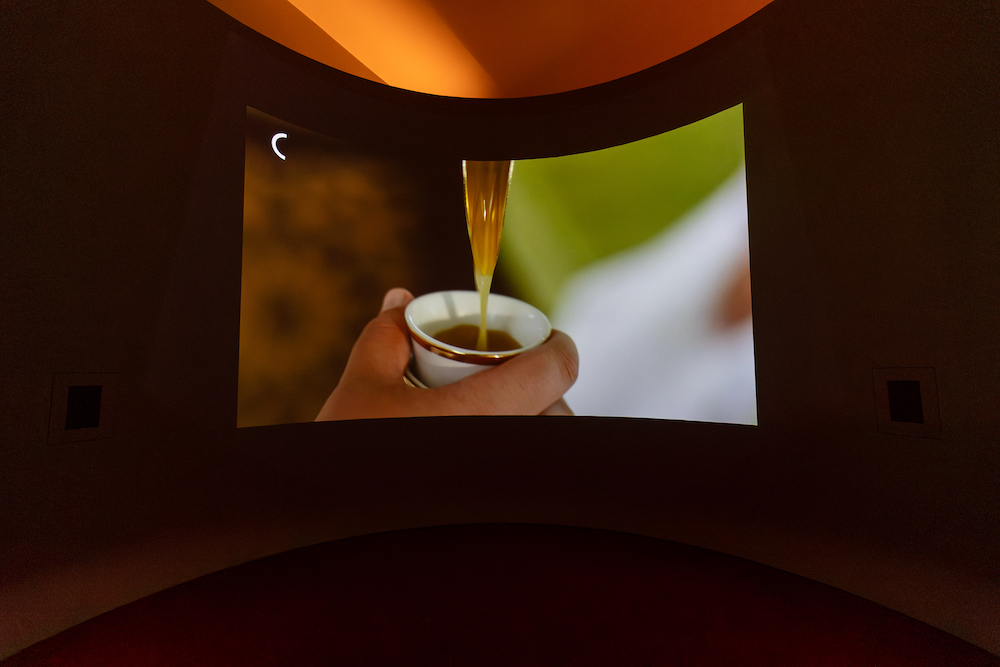
(S.M.): Do you have any advice for curators when it comes to designing engaging exhibits?
(M.P.L.): The main advice I would give to an exhibition curator is to do a maximum of visitor’s observation. I often walk around the museums’ galleries, observing how visitors approach specific exhibitions and media (objects display, videos, high tech or low tech interactive). It is very helpful to understand visitors’ behavior and interests. As curators we have a specific vision of what story we want to share and how. However, the variety of visitors’ cultural background, interest, and museum experience, sometimes put our concepts to the test.
Another interesting tool to create an exhibition is to test some of its concepts with focus groups. Again, some texts or mediums can seem very easy and obvious (in use or understanding) to museum professionals but actually be difficult for certain types of audience.
The challenge is to find a balance between what will work for the visitors (to catch their interest and pass a clear message/story), and the story we want to convey. We constantly have to ask ourselves “why do we do this exhibition”, “what message do we want to convey in this section”. To me, my role as an exhibition curator or interpretive specialist is to serve the exhibition topic and the communities it involves (the ones from where the content is coming from, and the visitors who will see the exhibition). The priority is for the exhibition to be understandable, make visitors willing to learn more about the topic by themselves, and ideally push them to rethink the way to experience and understand our world.
Growing Kopi, Drinking Qahwa: Stories of Coffee in Qatar and Indonesia
Showing until 17 February 2024
nmoq.org.qa/en/calendar/stories-of-coffee-in-qatar-and-indonesia

